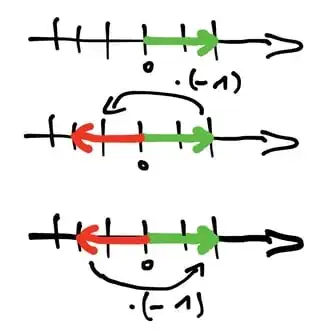In the complex plane we have
$$
-1 = e^{i\pi}
$$
Multiplication by $-1$ can be interpreted as rotation by $\pi=180^\circ$.
If you do this twice $(-1)(-1)$ you end up where you started
$$
(-1)(-1)= e^{i\pi} e^{i\pi} = e^{i2\pi} = e^{i 0} = 1
$$
One could also argue like this without complex numbers, like this:

About the compendium: going directly to proof theory in maths and logic or formal systems in computer science seems a hard task to me.
I would rather start with some introduction math books (set theory, calculus, linear algebra, logic, formal languages and automata, ..) to get a feeling for mathematical proofs.
Here are some nice proofs: link.
Or try to get a look at a book from Bourbaki in a mathematical library, to see very good mathematicians to build up maths from scratch.
